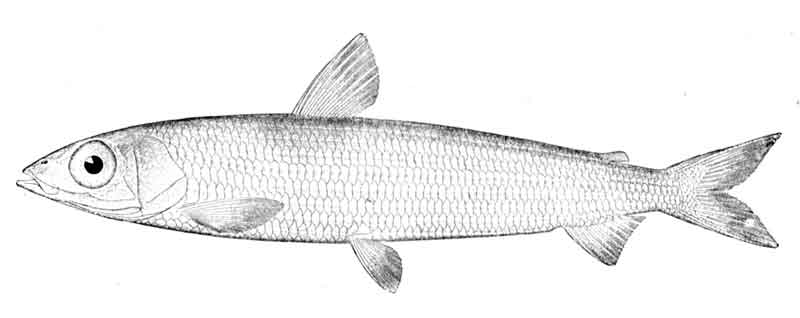Superregnum: Eukaryota
Cladus: Unikonta
Cladus: Opisthokonta
Cladus: Holozoa
Regnum: Animalia
Subregnum: Eumetazoa
Cladus: Bilateria
Cladus: Nephrozoa
Superphylum: Deuterostomia
Phylum: Chordata
Subphylum: Vertebrata
Infraphylum: Gnathostomata
Megaclassis: Osteichthyes
Superclassis/Classis: Actinopterygii
Classis/Subclassis: Actinopteri
Subclassis/Infraclassis: Neopterygii
Infraclassis: Teleostei
Megacohors: Osteoglossocephalai
Supercohors: Clupeocephala
Cohors: Euteleosteomorpha
Subcohors/Superordo: Protacanthopterygii
Ordo: Argentiniformes
Subordo: Argentinoidei
Familia: Argentinidae
Genera: Argentina - †Argentinidarum – †Dabachania – Glossanodon – †Protargentinolithus – †Pseudargentina

Argentina silus
References
Joseph S. Nelson: Fishes of the World. John Wiley & Sons, 2006. ISBN 0-471-25031-7.
Vernacular names
polski: srebrzykowate
The herring smelts or argentines are a family, Argentinidae, of marine smelts. They are similar in appearance to smelts (family Osmeridae) but have much smaller mouths.
Ontogenic series of a fossil species of the genus Argentina, the Geological Museum, Copenhagen
They are found in oceans throughout the world. They are small fishes, growing up to 25 centimetres (9.8 in) long, except the greater argentine, Argentina silus, which reaches 70 centimetres (28 in).
They form large schools close to the sea floor, and feed on plankton, especially krill, amphipods, small cephalopods, chaetognaths, and ctenophores.
Several species are fished commercially and processed into fish meal.
References
Froese, Rainer, and Daniel Pauly, eds. (2012). "Argentinidae" in FishBase. February 2012 version.
Retrieved from "http://en.wikipedia.org/"
All text is available under the terms of the GNU Free Documentation License

